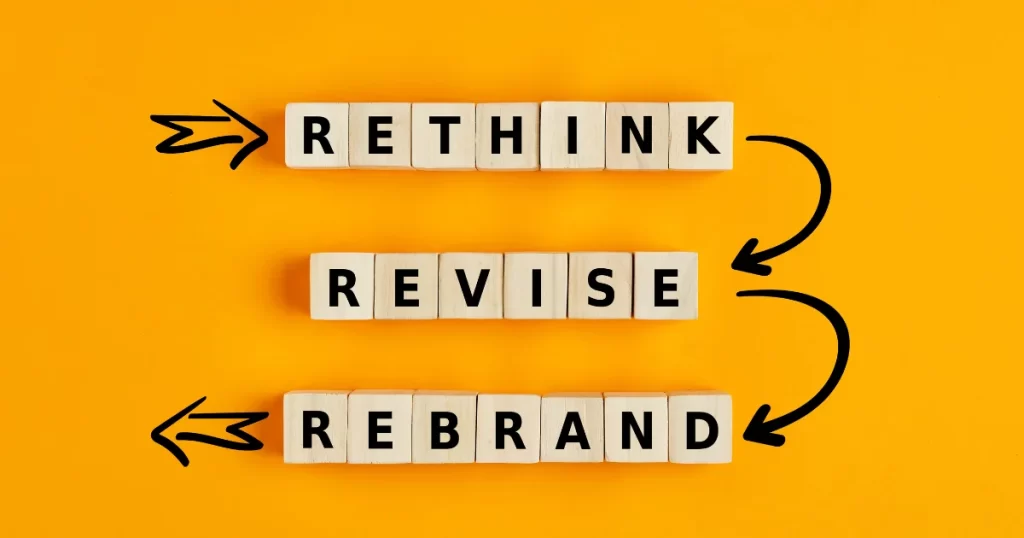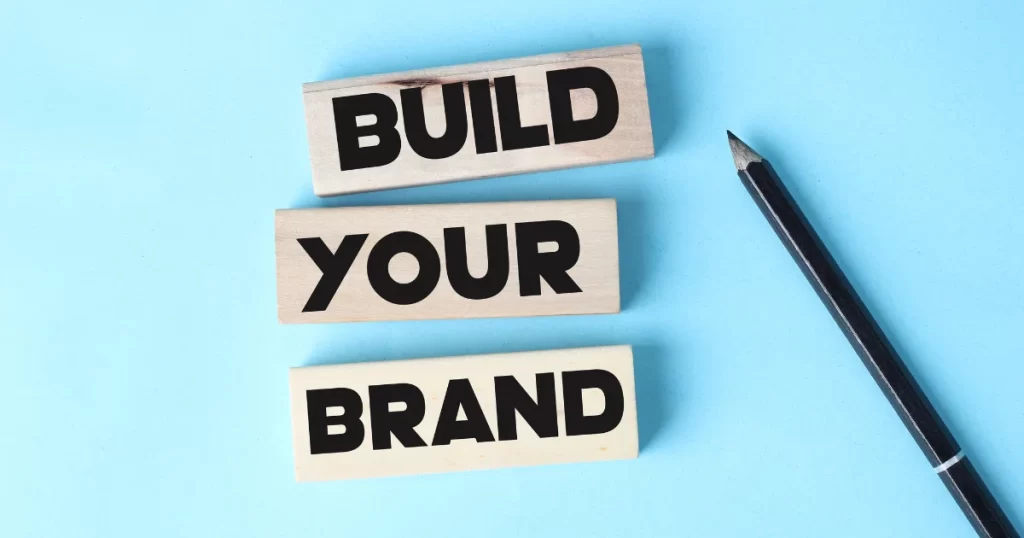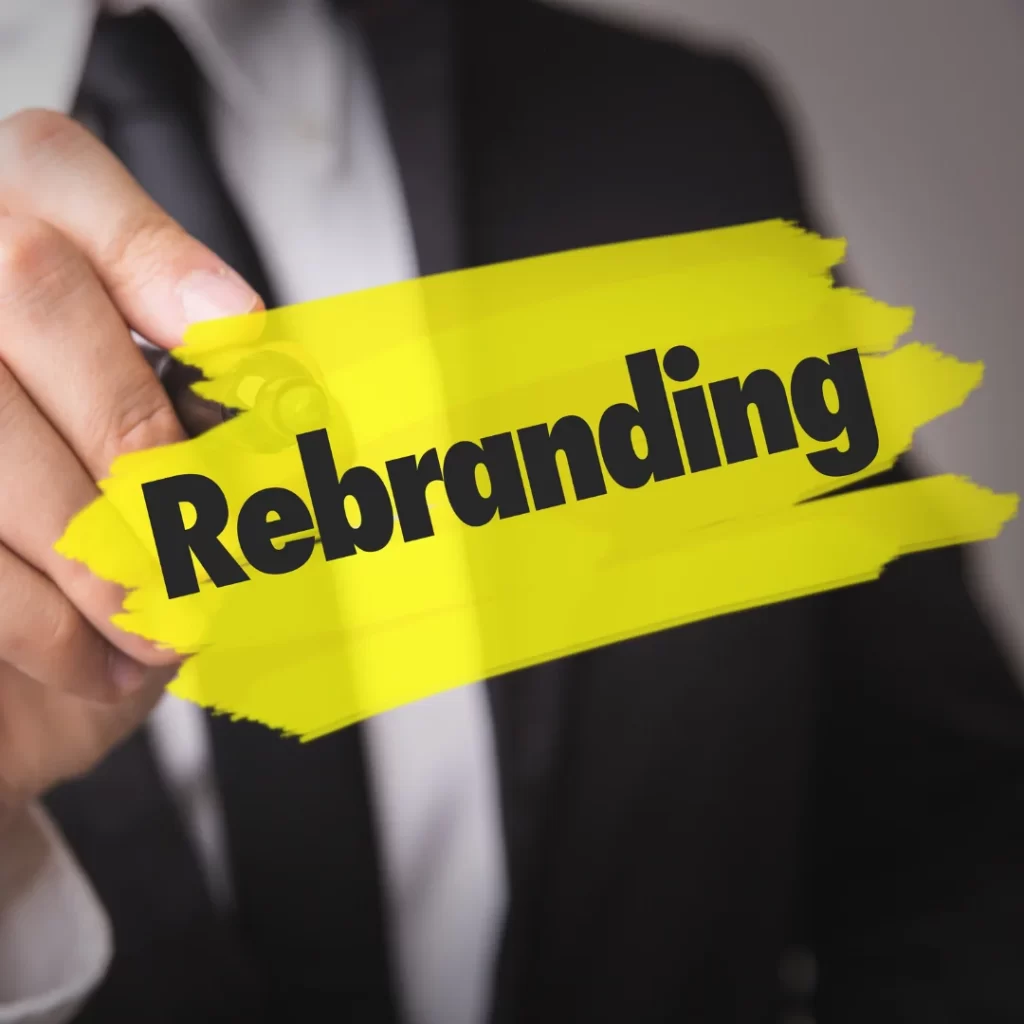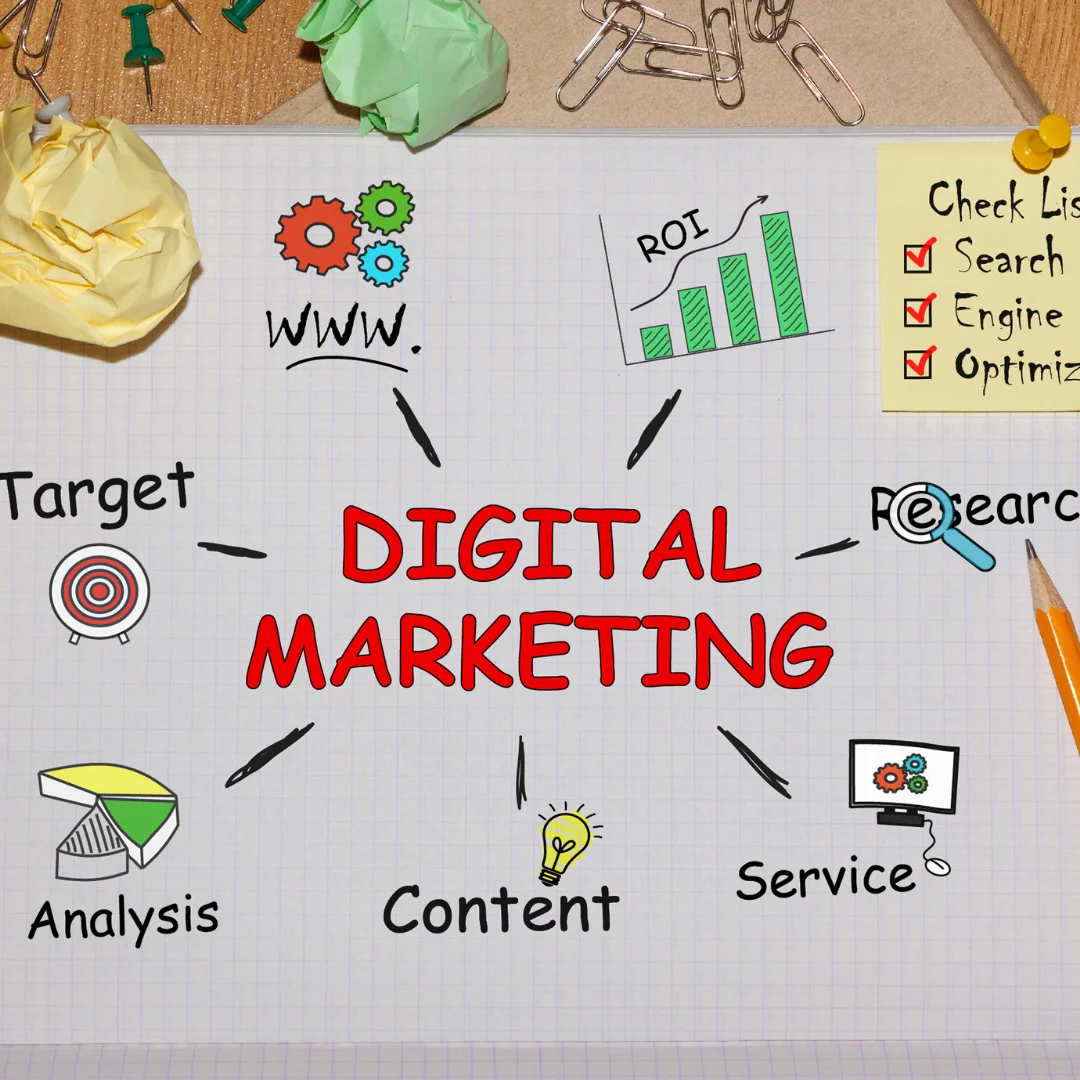Rebranding. Just the word can send shivers down the spine of even the boldest CEO. It’s like giving your brand a facelift, but instead of Botox, you’re injecting new messaging, visuals, and sometimes even values. The stakes? Audience loyalty. Lose them, and you’re not rebranding—you’re tanking.
But don’t fret; I’ve got you. In this guide, we’ll navigate the treacherous waters of rebranding without capsizing your audience boat. Think of it as a survival guide to 2025’s branding wilderness.
1. Understanding the Purpose of Rebranding

Let’s cut to the chase: rebranding isn’t just a fresh coat of paint on the same old walls—it’s like renovating your entire house because your neighbors (aka your competitors) started hosting pool parties, and you’re still stuck with a kiddie pool. Rebranding is about redefining who you are, why you exist, and why people should care. It’s existential therapy for your business.
Why Do Brands Rebrand?
- Market Repositioning
Maybe your brand was hot stuff a decade ago, but now? Not so much. If your current vibe screams “yesterday’s news,” it’s time to reposition. This could mean shifting from luxury to affordable, techy to approachable, or outdated to cutting-edge.- Example: Think of Dunkin’ (formerly Dunkin’ Donuts). They dropped “Donuts” from their name to emphasize coffee and beverages. They didn’t abandon donuts, but they strategically leaned into their fastest-growing market segment.
- Customer Evolution
Consumers are like teenagers—they change their minds constantly, and it’s your job to keep up. Preferences evolve, new trends emerge, and yesterday’s cool is today’s cringe.- Example: Take Burberry. This brand went from stodgy to stylish by embracing sleek marketing, modern designs, and a heavy dose of influencer partnerships.
- Technological Shifts
Sometimes, it’s not just your audience that changes; the entire industry does. If your brand still relies on print ads when everyone’s on TikTok, you’re essentially trying to sell typewriters in the age of iPhones.
Case Studies of Rebranding Success
- Lego:
Lego’s story is the stuff of rebranding legends. In the early 2000s, they were losing relevance faster than you could step on a brick (ouch). Their solution? Focus on creativity and expand their audience to include adults. Collaborations with pop culture franchises like Star Wars and Harry Potter turned Lego into a multi-generational powerhouse. - Old Spice:
Remember when Old Spice was your grandpa’s aftershave? Then came The Man Your Man Could Smell Like campaign, a genius rebranding move that made Old Spice funny, modern, and downright irresistible to younger audiences. Lesson learned: humor can work wonders.
The Big Takeaway
Rebranding isn’t a vanity project—it’s survival. Stay stale, and your brand risks fading into obscurity. But rebrand smartly, and you can become the next big thing, like a caterpillar morphing into a butterfly—or at least a cooler caterpillar.
2. Conducting In-Depth Audience Analysis
Before you dive headfirst into rebranding, you need to know your audience better than they know themselves. Yes, it’s borderline creepy, but it’s also crucial. A rebrand without audience analysis is like baking a cake without knowing who’s eating it. You might nail it, or you might end up with a gluten-free catastrophe no one touches.
Why Is Audience Analysis So Important?
Your audience is the lifeblood of your brand. Alienate them, and your rebranding efforts could backfire spectacularly. Remember Tropicana’s infamous 2009 redesign? They lost $20 million in sales because their sleek new packaging confused loyal customers.
Steps to Conduct Effective Audience Analysis
- Segment Your Audience
Divide your audience into groups based on shared traits—age, location, buying habits, or even how they take their coffee (seriously, coffee drinkers are a niche).- Pro Tip: Use tools like demographic data from social media platforms or CRM software. The more specific you get, the better.
- Create Buyer Personas
Think of buyer personas as fictional characters representing your ideal customers. Give them names, jobs, hobbies, and even pet peeves.- Example Persona: Meet Sarah, a 34-year-old marketing manager who loves sustainable brands, spends too much time on Instagram, and has a soft spot for witty ad campaigns.
- Leverage Data Analytics
Data doesn’t lie (unless you’re bad at interpreting it). Tools like Google Analytics, HubSpot, and customer surveys can provide insights into behaviors like:- Where your audience hangs out online.
- What products or services they engage with most.
- Which messages resonate with them (and which don’t).
- Example: Imagine you’re rebranding a skincare line. Analytics might reveal that 60% of your customers are Gen Z. Translation? Your rebrand better include TikTok tutorials and eco-friendly packaging because that’s what they care about.
Pro Tips for Flawless Audience Analysis
- Listen to Social Media Chatter: People love to talk about brands online—use this to your advantage.
- Conduct Surveys and Interviews: Sometimes, the best way to understand your audience is to just ask them.
- Study Your Competitors: If your competitors are thriving, figure out why. Are they targeting a specific niche? Using a certain tone? Stealing your customers (gasp)?
How Audience Insights Guide Rebranding
Let’s say your analysis reveals that your audience values sustainability and hates over-complicated products. Your rebrand might focus on clean designs, eco-friendly messaging, and minimalistic packaging.
The golden rule? Know your audience like you know your Netflix password—because one slip-up, and you’re locked out of their loyalty.
3. Engaging Future Generations While Staying True to Your Brand Identity

The elusive Gen Z and Gen Alpha—marketing’s equivalent of herding cats. They’re trend-savvy, authenticity-obsessed, and as allergic to phoniness as vampires are to garlic. But here’s the kicker: while these younger audiences demand change and innovation, they also have a nose for inconsistency. Rebranding for them means walking a tightrope between staying fresh and staying “you.”
What Makes Future Generations Tick?
Let’s break it down:
- They Crave Authenticity
Gen Z and Alpha can spot a fake faster than you can say “brand collab.” They value honesty, transparency, and brands that practice what they preach. Greenwashing, performative activism, or forced relatability? Immediate red flags. - They’re Digital Natives
If your rebrand doesn’t include a killer social media strategy, you might as well send them a fax. These generations live online, where platforms like TikTok, Instagram, and YouTube dictate trends faster than most brands can react. - They’re Purpose-Driven
Social justice, sustainability, and inclusivity aren’t optional. These aren’t just buzzwords for younger generations—they’re non-negotiables. If your brand’s values don’t align with theirs, they’ll swipe left.
How to Engage Them Without Losing Yourself
- Stay Authentic (Seriously, Don’t Fake It)
Nothing screams “try-hard” louder than a brand awkwardly jumping on trends they don’t understand. Want to connect with Gen Z? Don’t try to be them—just be you, but relevant.- Pro Tip: If your rebranding includes humor, ensure it’s organic. Forced memes or outdated slang will turn your brand into the punchline.
- Balance Old and New
Rebranding doesn’t mean throwing out everything your brand stands for. Keep your core identity intact while adding elements that resonate with younger audiences.- Example: Coca-Cola’s classic taste hasn’t changed, but their recyclable packaging and partnerships with eco-friendly initiatives scream “we care about the planet.”
- Leverage Influencers (the Right Way)
Influencer marketing is still gold—if done right. Partner with creators who genuinely align with your brand rather than those who will hawk anything for a paycheck. - Experiment with New Platforms
If your current audience skews older but you want to attract Gen Z, explore platforms they dominate. TikTok isn’t just for dance challenges; it’s a playground for storytelling, behind-the-scenes content, and showcasing your brand’s personality.
Future-Proofing Your Brand Without Compromising Your Roots
Think of your brand identity as a sturdy tree. The roots (your core values) keep you grounded, while the branches (your strategy) stretch toward new audiences. The key is growth without uprooting what makes you, well, you.
4. Building Trust Through Authenticity and Transparency During the Rebranding Process
Let’s be honest: trust is the currency of branding, and rebranding can feel like a gamble. Change too much, and your audience might stage a mutiny. Change too little, and they’ll wonder why you bothered. The secret to walking this tightrope? Authenticity and transparency.
Why Transparency Matters in Rebranding
Imagine this: your favorite coffee shop suddenly changes its logo, drops your go-to latte, and introduces a menu full of kale smoothies—all without warning. You’d feel betrayed, right? That’s how customers feel when brands overhaul themselves without a heads-up.
Transparency builds trust. It’s your way of saying, “Hey, we’re making changes, but we’re still us.”
How to Maintain Trust During Rebranding
- Communicate Early and Often
Think of your rebrand as a plot twist in a TV show. If you spring it on your audience without any buildup, you’ll leave them confused and angry. Instead, tease your changes, share the “why,” and give your audience a chance to adjust.- Example: When Slack rebranded in 2019, they openly explained their decision to tweak their logo, complete with a blog post breaking down the design process. The result? A smoother transition and less backlash.
- Explain the “Why” Behind the Rebrand
Audiences don’t just want to know what you’re changing—they want to know why. Is it to reflect new values? Appeal to a broader audience? Shed an outdated image? Be honest, even if the truth isn’t glamorous.- Pro Tip: Use FAQs, press releases, or even Instagram Stories to address common questions and concerns.
- Stay True to Your Values
Here’s the deal: rebranding isn’t a hall pass to abandon your principles. If your brand has always stood for quality, don’t cut corners post-rebrand. If you’re known for innovation, don’t suddenly play it safe.- Example: Ben & Jerry’s frequently updates its branding, but they remain vocal about social issues, ensuring their audience knows their values haven’t wavered.
- Involve Your Audience
Rebranding doesn’t have to be a one-sided conversation. Ask for feedback, run polls, or beta-test new ideas with loyal customers. When people feel involved, they’re more likely to support the change.- Example: When Dunkin’ revamped its logo and dropped “Donuts,” they engaged with fans on social media, making the transition feel collaborative rather than imposed.
Transparency Pitfalls to Avoid
- Overpromising: Don’t hype changes you can’t deliver. If you promise your rebrand will “change the game,” it better deliver.
- Ignoring Backlash: Not everyone will love your new look, and that’s okay. Just don’t dismiss criticism outright—acknowledge it, and explain your reasoning.
- Being Vague: “We’re evolving to meet customer needs” is corporate-speak nobody trusts. Be specific, or risk sounding disingenuous.
5. Navigating Cultural Trends, Community Engagement, and Diverse Representation

Let’s face it: in 2025, staying culturally relevant isn’t just a good idea—it’s essential for survival. Consumers are hyper-aware, ready to praise brands that get it right and roast those that don’t. Rebranding offers a golden ticket to show you’re not tone-deaf, but proceed with caution. This isn’t a game of bingo where you tick off buzzwords like “inclusivity” and “community.” It’s about genuinely integrating these elements into the very soul of your brand.
How Cultural Trends Shape Rebranding Success
Cultural trends are like waves: ride them, and you look innovative; miss them, and you’re left in the dust.
- Social Issues and Advocacy
Brands no longer get a pass for staying neutral. Today’s consumers want companies that stand for something. Whether it’s climate change, LGBTQ+ rights, or racial equity, your stance isn’t just a side note—it’s a headline.- Pro Tip: Don’t just slap a rainbow flag on your logo every June. Support the cause year-round with meaningful actions like donations, partnerships, and internal policy changes.
- Pop Culture Integration
If your rebrand doesn’t reflect what’s trending, you risk looking outdated. This doesn’t mean hopping on every viral TikTok challenge; it’s about aligning your brand’s voice with what’s happening in entertainment, fashion, and media.- Example: Balenciaga’s edgy, meme-worthy campaigns tapped into Gen Z humor while staying true to their avant-garde identity.
Community Engagement: The Secret Sauce
Rebranding isn’t just about talking to your audience—it’s about listening and actively involving them.
- Engage Local Communities
A brand that’s visible in its community is a brand that earns trust. Whether you’re sponsoring events, collaborating with local artists, or supporting small businesses, these efforts show you’re more than just a faceless corporation.- Example: When Nike launched its “Community Store” initiative, it prioritized hiring locals and reinvesting profits into nearby neighborhoods.
- Make Your Audience Part of the Story
Want loyal customers? Make them co-authors of your rebranding journey. Run design contests, host focus groups, or simply ask for feedback.- Pro Tip: User-generated content (UGC) is gold. Encourage fans to share photos, videos, or testimonials that align with your new brand identity.
Diverse Representation: More Than Just a Checkbox
Representation isn’t a trend; it’s a requirement. Consumers want to see their identities reflected in your brand—authentically and respectfully.
- Inclusive Marketing
Your visuals, ads, and messaging should celebrate diversity in all its forms—ethnicity, gender identity, body types, abilities, and beyond.- Pro Tip: Avoid tokenism. Representation should be woven into the fabric of your brand, not treated as a one-time campaign.
- Internal Representation Matters
If your leadership team doesn’t reflect the diversity you promote, customers will notice. Authenticity starts within. - Adapt Across Markets
Global rebranding efforts must respect cultural nuances. A campaign that works in New York might flop in Tokyo if you ignore local values and preferences.- Example: McDonald’s adjusts its menus and marketing to reflect regional tastes, from McSpicy Paneer in India to the McArabia in the Middle East.
6. Adapting to Digital Transformation
If your rebranding strategy doesn’t scream “digital-first,” you’re basically shouting into the void. In a world where consumers are glued to their screens, your online presence is your storefront, billboard, and customer service desk—all rolled into one.
Why Digital Transformation is Non-Negotiable
The way people interact with brands has fundamentally shifted. Rebranding now means navigating social media algorithms, adapting to e-commerce trends, and leveraging data to predict consumer behavior.
What Works Online in 2025?
- Video-First Strategy
Video content isn’t just king—it’s the entire monarchy. Platforms like TikTok, Instagram Reels, and YouTube Shorts dominate attention spans. Your rebranding efforts need to be visually compelling and snackable.- Pro Tip: Use behind-the-scenes footage to showcase your rebranding process. Customers love seeing the messy, human side of your transformation
Example Video Ideas:
| Video Type | Description | Platform |
|---|---|---|
| Brand Story | A short, engaging video about your rebranding journey. | YouTube, TikTok |
| Product Teasers | Quick previews of updated products or services. | Instagram, Reels |
| User Reactions | Capture genuine reactions from loyal customers. | TikTok |
- Interactive Content
Rebranding shouldn’t feel like a one-way announcement. Interactive elements like polls, quizzes, and live Q&A sessions make your audience feel involved.- Example: Conduct a live stream where your CEO answers audience questions about the rebranding process. Bonus points if it’s unscripted and funny.
- Personalized Experiences
Use data analytics to tailor content and recommendations to individual users. From email campaigns to targeted ads, personalization fosters loyalty.- Pro Tip: Incorporate AI-powered chatbots for 24/7 customer support that reflects your new brand tone.
Key Tools for Digital Rebranding
Here are some tools you’ll want in your arsenal:
| Tool/Platform | Purpose | Why It’s Essential |
|---|---|---|
| Canva/Adobe Creative Cloud | Visual content creation | For designing logos, ads, and social media graphics. |
| HubSpot | Marketing automation | Streamlines email campaigns and audience segmentation. |
| Google Analytics | Data analytics | Tracks customer behavior and measures campaign success. |
| Hootsuite | Social media management | Keeps your rebranding consistent across platforms. |
| TikTok Ads Manager | Ad placement on TikTok | Taps into Gen Z’s favorite platform. |
7. Overcoming Implementation Challenges: The Messy Reality of Rebranding

Rebranding might sound glamorous—new logos, shiny campaigns, a whole vibe shift—but let’s not kid ourselves. It’s chaos, plain and simple. Think late nights, endless Zoom calls, and enough coffee to fuel a small nation. Whether you’re overhauling your entire identity or just tweaking your tagline, the process is riddled with obstacles. But hey, no pressure.
Common Roadblocks and How to Bust Through Them
- Internal Resistance: The “We’ve Always Done It This Way” Syndrome
Convincing your team to embrace change can feel like trying to teach a cat to fetch. Humans are creatures of habit, and rebranding disrupts comfort zones.- Solution: Start with transparency. Share the why behind the rebrand—whether it’s staying competitive, addressing a PR crisis, or appealing to a new audience. Host workshops, Q&A sessions, and brainstorming meetings to involve employees early. Bonus points if you bribe them with snacks.
- Budget Constraints: Champagne Taste, Beer Budget
Rebranding isn’t cheap. Between hiring designers, rolling out campaigns, and updating every piece of collateral, the costs pile up fast.- Solution: Prioritize spending. Focus on high-impact areas like your logo, website, and top-performing products. Use cost-effective tools like Canva for social media and negotiate with vendors. And remember, perfection is overrated—start with what you can afford and scale up later.
- Customer Confusion: “Wait, Is This Still the Same Brand?”
A rebrand done poorly can alienate your loyal customers. If people don’t recognize you—or worse, think you’ve been bought out by a faceless conglomerate—you’ve got a problem.- Solution: Communication is your best friend. Announce the rebrand early and often. Use emails, social posts, and even good ol’ snail mail to explain the changes. Show before-and-after visuals to reassure customers it’s still you, just upgraded.
Tips for Staying Sane Through the Chaos
- Set Clear Goals
Vague goals are the death of rebranding projects. Define measurable objectives, like increasing brand recognition by 20% or gaining 15,000 Instagram followers within six months.- Pro Tip: Break your goals into bite-sized tasks. Instead of “launch the new website,” try “finalize homepage copy,” “review design mockups,” and “test mobile responsiveness.” Small wins keep morale high.
- Have a Plan B (and Maybe a Plan C)
Murphy’s Law is real, and it has a personal vendetta against rebranding projects. Whether it’s a tech glitch, supply chain hiccup, or a social media backlash, you need contingency plans.- Example: If your website launch gets delayed, ensure your old site is updated with a “Coming Soon” banner. If a campaign flops, pivot quickly with A/B testing.
- Delegate Like a Boss
You can’t do it all, and trying to will lead to burnout (and bad decisions). Assign clear roles and responsibilities to your team.
| Role | Responsibility | Example Task |
|---|---|---|
| Project Manager | Oversee timelines and budgets | Schedule weekly progress meetings |
| Creative Lead | Develop visual elements | Design new logo and packaging |
| Marketing Coordinator | Execute campaigns | Write social media captions |
8. Continuous Evaluation Post-Rebrand: The Work Isn’t Over
So you’ve survived the rebrand. You’ve popped champagne, high-fived your team, and maybe even gone viral. Congrats! But don’t get too comfy. The real work starts now. A rebrand isn’t a one-and-done deal—it’s an ongoing process of evaluation, adaptation, and improvement.
How to Monitor Your Rebrand’s Success
- Feedback Loops: Learn What’s Working (and What’s Not)
Your audience will tell you everything you need to know—if you bother to ask.- Tools to Use:
- Surveys: Use platforms like Typeform or Google Forms to gather insights from customers.
- Social Listening: Tools like Hootsuite or Brandwatch can help you track mentions, hashtags, and sentiment analysis across platforms.
- Customer Interviews: Nothing beats a good old-fashioned conversation.
- Example Questions to Ask:
- “What do you think of our new look?”
- “Does our messaging resonate with you?”
- “What changes would you like to see in the future?”
- Tools to Use:
- Track Key Metrics Like a Hawk
Data doesn’t lie. Monitor your performance against the goals you set during the planning phase.
| Metric | Why It Matters | How to Track |
|---|---|---|
| Website Traffic | Measures brand visibility | Google Analytics |
| Social Media Engagement | Gauges audience interest | Platform insights (e.g., Instagram, Twitter) |
| Sales/Revenue Growth | Shows financial impact of rebranding | CRM or sales tracking software |
3. Test and Tweak
Think of your rebrand as a beta launch. Use A/B testing to refine elements like website layouts, ad copy, and email subject lines.
When to Pivot (and When to Hold Steady)
- Pivot: If metrics show a significant drop in customer satisfaction or engagement, it’s time to rethink your approach. Maybe your logo needs more contrast, or your messaging missed the mark.
- Hold Steady: Rebranding takes time to resonate. Don’t panic if you don’t see immediate results—consistency is key.
Final Thoughts: Rebranding Takes Guts (and Coffee)
Rebranding in 2025 isn’t for the faint of heart. It’s messy, unpredictable, and occasionally infuriating. But when done right, it’s also transformative. By setting clear goals, embracing feedback, and staying adaptable, you can navigate challenges like a pro.
Now go forth and rebrand—but if it all goes sideways, at least you’ll have a great story to tell over drinks.





